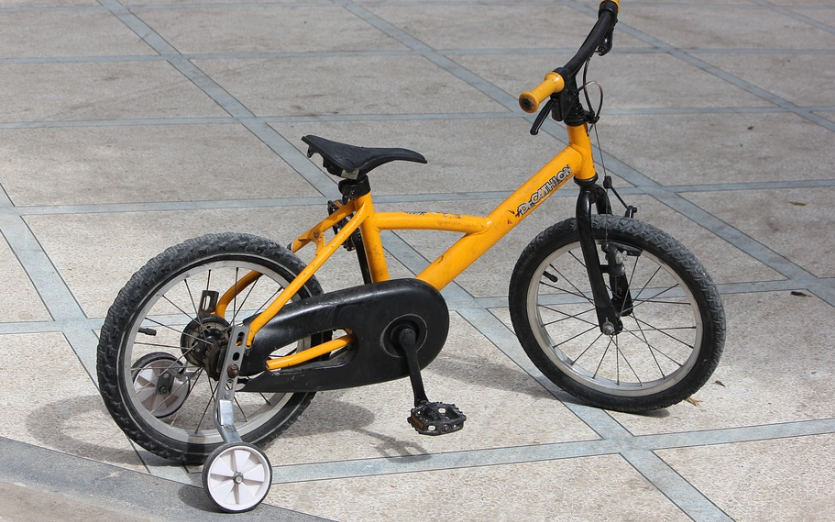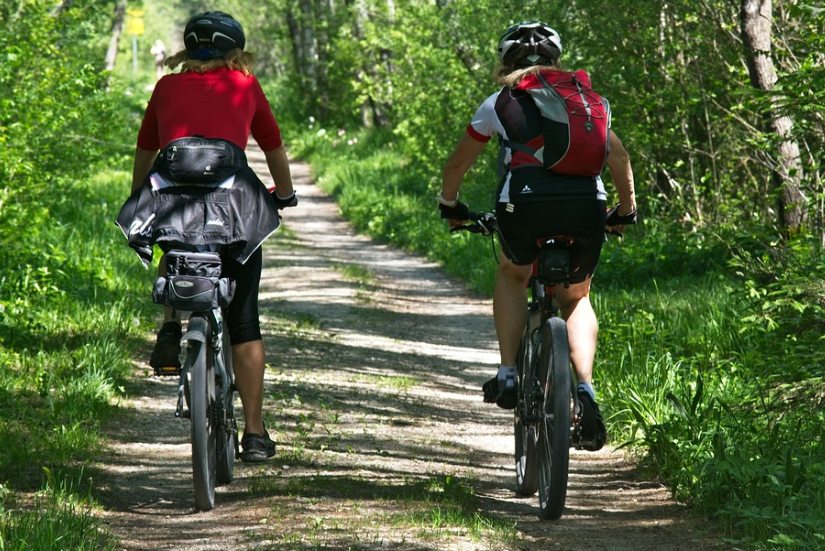Guide To Learning To Ride A Bicycle
Riding a bicycle is one of the biggest accomplishments in sports. If you want better exercise, an eco-friendly method of transportation, access to exciting courses, or general fun with friends and family, learning how to ride a bicycle should be high on your ‘to-do’ list. The good news is that we’ve got you covered with the quickest possible guide to get you riding your favorite bike before you know it!
Keep in mind that age doesn’t matter when it comes to riding a bicycle. As long as you’re capable of maintaining balance and getting some healthy cardio, you can start at 5 or 95. Always start off with your safety gear on, especially a helmet. Many people are fortunate enough to never fall at all when learning to ride a bicycle but staying prepared for worst case scenarios is always a good idea.
Start with Training Wheels
People often think of training wheels as something that only kids should use. The truth is that anyone who’s learning to ride a bike would benefit from using training wheels. Without the prior knowledge of how pedaling, steering, and braking feels, how could you make the jump to full-on riding a bike without assistance?
Balancing is the hardest part of riding a bike, but we’ll get into that in a little bit. The reason why training wheels are so necessary is that they provide that balance without very many drawbacks at all. A small wheel on both sides of the rear tire lets you rest, accelerate, and slow down without having to worry about falling sideways.
While a lot of bikes come with training wheels, you can also buy a new pair and put them on any bicycle you have. Either way, you’re doing yourself a huge favor by starting with step one and slowly working towards daily bike rides, free of assistance!
Practice with Friends or Family
Friends and family are always there to help you, so why not enlist them to help you learn how to ride a bike? Once you’re ready to take the training wheels off, the sudden loss of balance can be intimidating. You’ll feel that the pull from both sides of the bicycle can throw you off a little bit, but it’ll all become easier as you practice.
The best way to use a friend in the process is to have them stand near the rear wheel where the training wheels once were. They can even hold the bike saddle while you slowly pedal. This little bit of assistance will let you slowly understand how to keep the bike balanced without having to fall over time and time again.
You might’ve seen the movies or heard of a time when someone was pedaling with a friend supporting them, only to look back and realize that they were doing it by themselves all along. Riding a bicycle is definitely a challenge because of balance issues, but our mind plays a big role as well. Continue to ask your friends or family for help and remember the old saying: ‘Practice makes perfect’.
Knowing Your Bicycle Inside and Out
This can be done before or after removing the training wheels, but knowing how to work your brakes, saddle, and handlebars is an absolute must. Most bicycles have handle brakes, but some only have a brake on one side or the other. Figure out how many brakes there are, and which one is connected to which wheels. This will make your experience a hundred times easier.
You should also mess around with the saddle or sear a little bit. The height of your bicycle saddle can directly impact how well you accelerate, ride, and slow down. Perfect height for your seat would let your feet rest firmly on the ground without your knees being bent too much. Standing up for speed becomes useful later on, so less knee bending makes it easier for you to get up quickly. Not only that but having a seat too low can hurt your knees after a while.
Finally, get to know your handlebars and how sensitive they are. Pretty much all handlebars have the same level of sensitivity, but you need to know the ropes before you can start pedaling on your own. Taking turns and doing tricks will require you to become familiar with them, just like a driver needs to know the sensitivity of their steering wheel.
How to Maintain Your Balance on a Bicycle
As we said before, keeping your balance is definitely the trickiest part of riding a bike. After all, that’s literally the only difference that removing the training wheels will have. Don’t worry yourself too much, though. Some people can get the hang of riding and balancing in less than an hour! However long it takes, keep at it and you’ll understand the process soon enough.
Maintaining horizontal balance is much easier when you’re moving faster. If you’re completely stopped, the only way you can stay balanced is with one of your feet on the ground. For this reason, you always want to start moving right when you put both feet on the pedals. Don’t be afraid to start off slowly, planting your foot on the ground for a little bit of stability.
Keep in mind that turning can throw off your balance when you first start out learning how to ride. You should never try to accommodate a fall by turning too sharply, but rather apply a light amount of force to the handlebars in the opposite direction while shifting your weight. This will ensure that you won’t fall down either way.
How to Speed Up on a Bike
Accelerating on a bicycle is rather simple; The more you pedal, the faster you go. That being said, you need to master the speed before you go crazy with it. Going too fast can prevent you from slowing down in time, regardless of the brakes and tires you’re using. Another way that cycling compares to driving a car is that the faster you go, the harder it is to stop in time. Always know what lies ahead of you, especially if you’re trying to ride in the street.
Another little trick to incorporate once you’ve learned how to properly maintain balance is standing up for speed. Standing up lets you put much more leg power into your pedals, increasing the rotations and dramatically increasing the acceleration. Some people even find it easier to make turns and take on jumps when they’re standing up. It gives you much better handling on the bicycle, creating an all-around simpler atmosphere for riding.
Learning How to Slow Down or Brake on a Bike
Slowing down or braking is just as important as the rest of it. You should always figure out how it all works before removing the training wheels, but it’s worth mentioning at this point still. Since you can go a lot faster without training wheels, you need to figure out how to slow down a little bit sooner.
When you’re about to come to a complete stop, get your feet ready to touch the ground. Remember how we said that there’s no way to balance without your feet once the training wheels are off? This means that you have to firmly plant both of them in order to keep yourself upright when you stop!
Learning to ride a bicycle is a fun experience. Take it to step by step and you’ll be impressed with yourself having learned a new important life skill. Good luck, and we hope this guide has helped you out along your journey!
If you liked the article, please leave your feedback.






